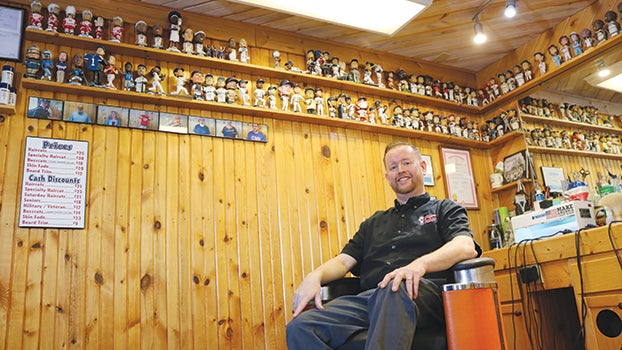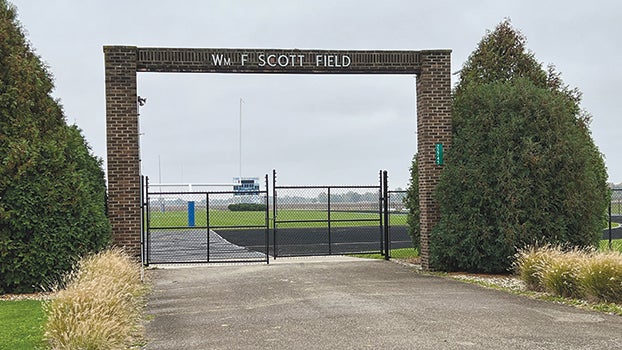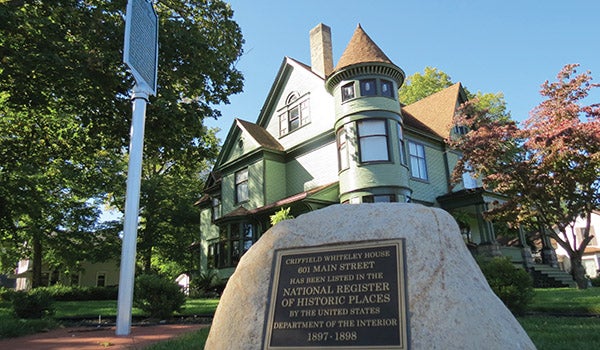A shared passion: Married museum directors dedicated to uncovering, preserving Niles and Dowagiac history
Published 8:45 am Thursday, February 25, 2016

Christina and Steve Arseneau direct the Niles History Center and Dowagiac Area History Museum, respectively. (Leader photo/AMBROSIA NELDON)
Editor’s note: This is a sneak peek of what is inside Horizons 2016. Find more stories in the publication Copies are available inside Thursday’s newspapers and at Leader Publications’ office at 217 N. Fourth St., in Niles.
Steve Arseneau has a passion for storytelling.
From the history of Dowagiac’s Round Oak Stove to the people who put Cass County on the map, the Dowagiac museum director has been telling true tales of times long past for most of his life.
One of his favorite stories to tell, though, is about a pair of historians whose shared passion for uncovering artifacts led to a love story fit for film.
The setting of that tale starts at the Milwaukee Public Museum — a place that has marked many milestones in the Milwaukee native’s life.
Comparable in size to Chicago’s Field Museum, the history center contains more than 4.5 million specimens within its collections that fill exhibits ranging from local history to prehistoric artifacts. Simply put, it’s a history buff’s dream space, so it is no wonder this elaborate wonderland sparked a fire in Steve when he was 10 years old that he has chased ever since.
Determined to pursue his dream, Steve stayed in Wisconsin after high school, attending the University of Wisconsin Lacrosse to earn his bachelor’s degree in history and the University of Wisconsin Milwaukee for his master’s in public history. While earning his master’s degree, Arseneau returned to the Milwaukee Public Museum to pay his dues as an intern, staying there for two years while finishing his studies.
The year Arseneau finished his degree, he moved to Michigan to work at the Dowagiac Area History Museum, which was then located at Southwestern Michigan College. Five years later, he returned to his beloved museum for a conference.
There, he met Christina Hirn, who, following a similar passion, earned degrees in classics at the University of Illinois and New York University.
“I knew that I didn’t want to go into academic work, so I started volunteering and interning at all the museums on campus, trying to get as much experience as I could, including a summer at the Milwaukee Public Museum,” Christina said. “[Steve] was working there at the time, we figured out. We could have crossed paths and never even known it.”
As fate would have it, the conference brought them together seven years later, and not long after, Christina Hirn became Christina Arseneau.
Moving to southwest Michigan
After marrying Steve, Christina relocated to southwest Michigan, where her husband had already planted roots at the museum in Dowagiac. She began working as the director at the Heritage Museum in St. Joseph in 2007, and stayed there until taking on her current role as the director of the Niles History Center.
Leading the way in the history field in neighboring cities makes for an interesting dynamic at the dinner table if nothing else, Steve jokes.
“It’s nice that we’re able to talk about our work and know what we’re talking about,” he said.
Christina added that even while she was working at the Heritage Museum, the two loaned each other artifacts for various exhibits and share similar networks and elements of history.
“We know a lot of the same local characters,” she said.
While on a smaller scale than the metropolitan museums they worked at previously, the husband-wife duo said the work is very similar.
“Museums are the same all across the country because they face the same challenges,” Steve said. “We’re both big-city people, so that’s a change of pace for us… but as far as the museum feel, we’re all facing the same challenges: funding, how to take care of our collections, how to draw visitors, what kind of events are appropriate.”
Christina is originally from Chicago and is accustomed to younger generations who haven’t grown up in the city, unlike in Niles and Dowagiac where many generations of families can be traced back in the same town.
“I will say people here in this region, they’re more connected to their local history and are more invested in it,” Christina said.
The Arseneaus, who live in Niles, work to share the history of the communities they represent with unique exhibits and programming. While Steve has been uncovering Dowagiac’s history for the past 18 years or so, Christina is relatively new to the Niles history scene, only serving in the role since early November 2015. Nonetheless, she has big plans for the history center.
A passion for storytelling
Of the many facets of directing a local history museum, Steve and Christina both say their biggest passion is the end product: creating exhibits to showcase their findings.
“For me, [exhibits] are where the collections and public part of museum work meet for me,” Christina said. “I like putting on those presentations where we can tell a story with our artifacts, and then have the public see that part of it.”
In that sense, the Arseneaus are very much treasure hunters although, Christina said, not in the traditional sense of the term.
“I guess what we might consider a treasure isn’t what the average person would consider a treasure. We don’t look for monetary value. We look for stories that are behind an object.”
Both have a knack for finding those extraordinary gems and showing their value, though.
“We’ve got a lot of community treasures on exhibit in the upstairs gallery,” at the Dowagiac History Museum, which opened in 2015, Steve said. “I love the wheelbarrow that was used for transporting sugar and flour to the bakery.”
Another one of Steve’s favorite parts of the exhibit in the museum’s relatively new home is a collection of toys that, to the average person, may seem like ordinary trinkets. However, the museum director’s eyes light up when he tells the story of the ironworkers who created molds in their free time so they could bring home toys for their children.
“Those are real community treasures, and the only way people know about them are that they’re things that are passed down through family or friends,” Steve said, adding that while he’s good at “talking people out of things,” he often tells people interested in donating that they should keep their treasures with their family.
Among many projects Christina is excited for in her new position is the annual archaeological dig at Fort St. Joseph this summer.
“Our open house is going to be held in August this year and one of the things that we’re working on first is updating the exhibits that have to do with the fort,” she said. “We’re working on combing through the artifacts that have been found and really telling that story.”






